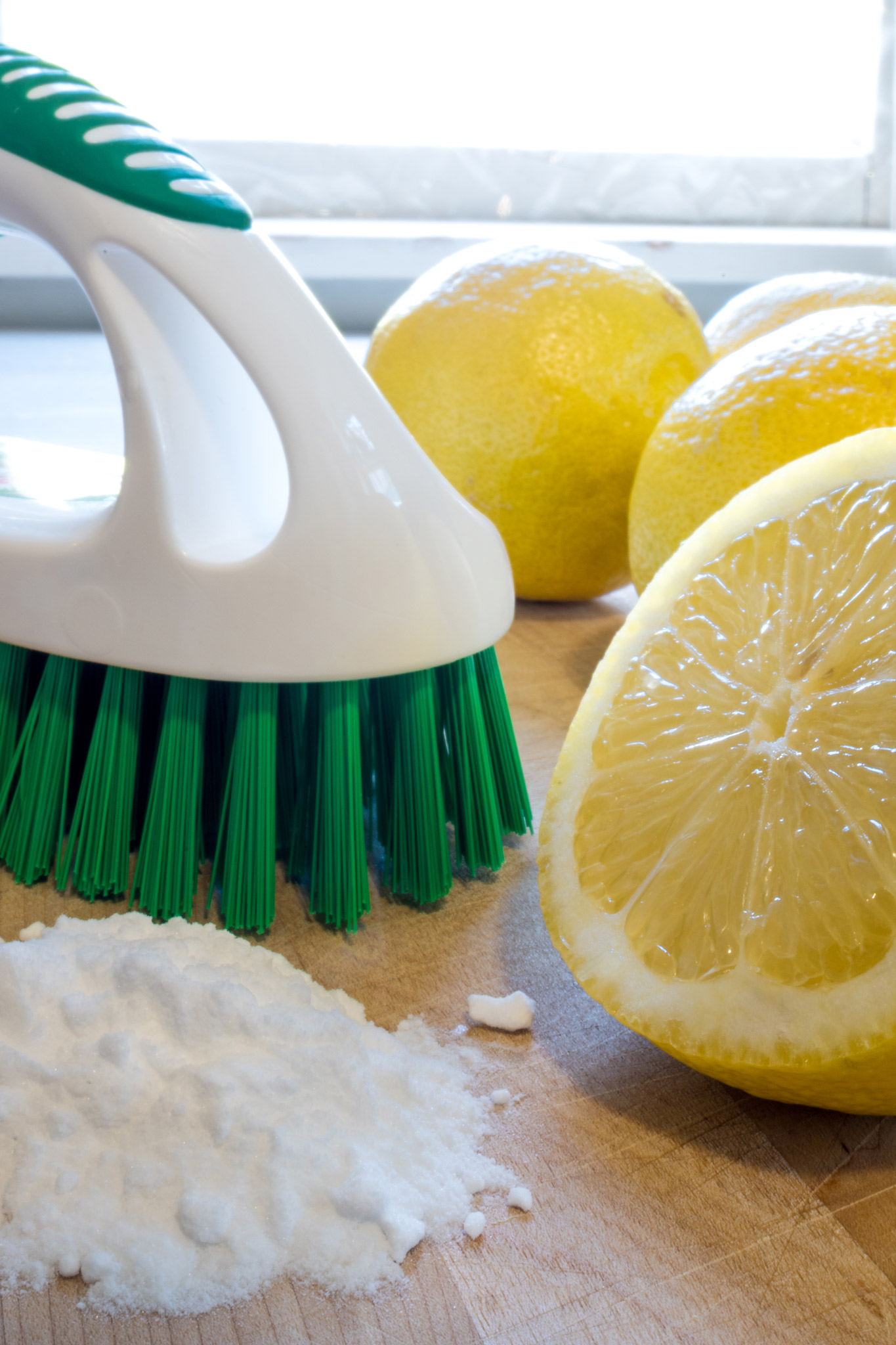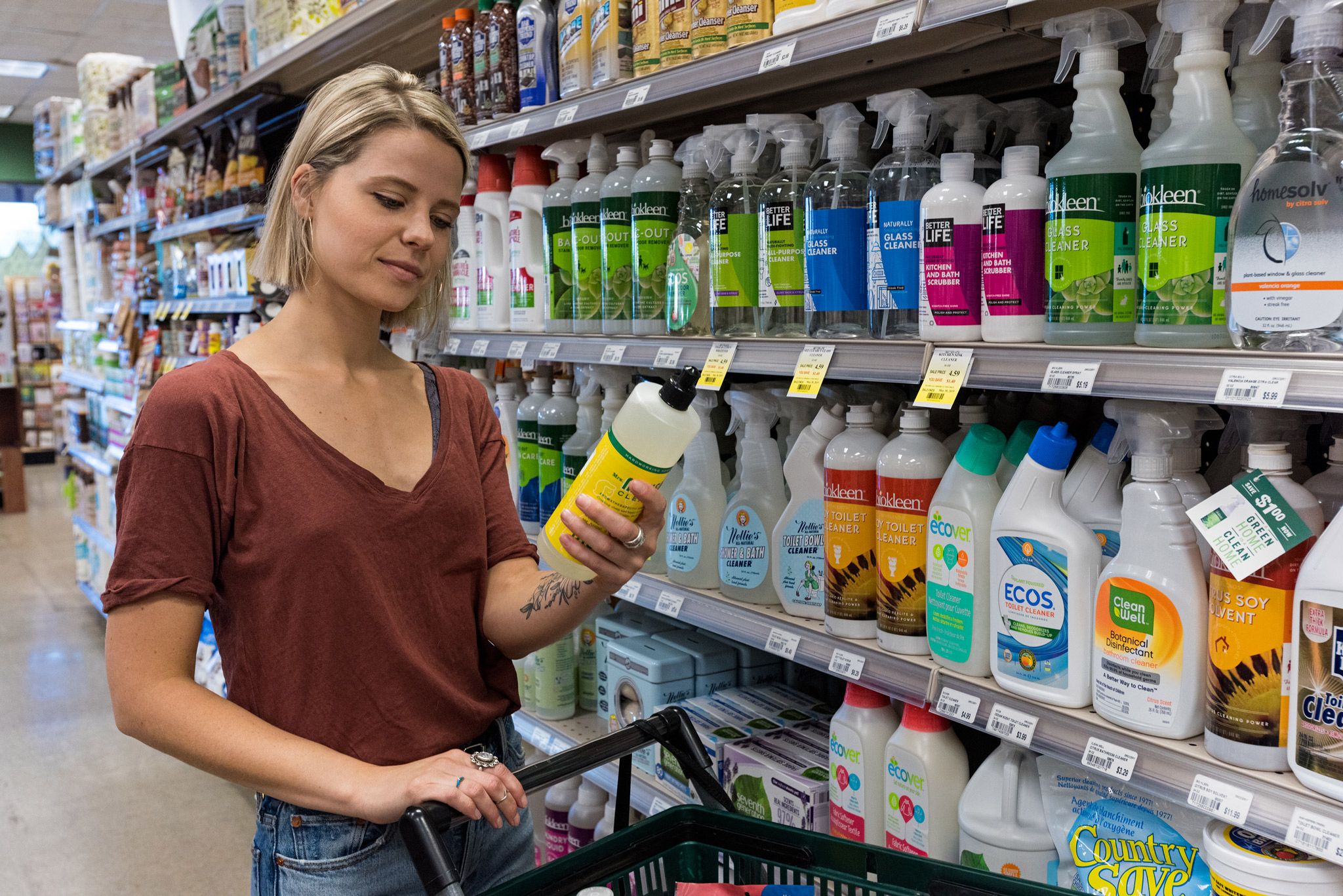From climate change to GMOs to the plastic pollution of our oceans, there are plenty of hefty “green” issues for us to consider and act upon. However, change and awareness starts with little choices. What better place to begin thinking about sustainability and green living than the personal environment of your home.
» Clean
There are a lot of home cleaning products out there, and you probably have your favorites. I certainly do. I want to make sure that when I scrub my sink I can see the clean afterwards. My bathroom, though, doesn’t have any windows, so cleaning with bleach and conventional products sometimes means that I have to step out into the other room to breathe fresh air for a minute. That is never a good thing.
Studies have shown that fumes from some cleaning products can induce asthma in people who did not previously suffer from the condition. At the least, many common cleaning supplies can cause respiratory difficulties, and they have definitely been proven to bring on asthmatic attacks in individuals diagnosed with asthma. The labels read like a troublesome science lab checklist, and several common ingredients are known to be carcinogenic. One of these is the frequently used preservative formaldehyde. Yes, the stuff they use to prepare cadavers. In addition, some cleaners can cause chemical burns, skin irritation and allergic reactions.
According to a study done by the New York State Department of Health in 2010, “Children born to women who held cleaning jobs while pregnant have an elevated risk of birth defects.” In particular, borax and an ether found in a few heavy-duty degreasers have been linked to reproductive and developmental toxicity. And we’ve all read the poison warnings.
Not only are these toxins and volatile organic compounds being absorbed through the skin and breathed in, they are also flowing into our waterways and affecting water quality, agriculture, and the life and health of aquatic species and wildlife.
Switching your cleaning products may seem like a daunting task, but it doesn’t have to be. Start with a healthier brand, like AspenClean or Biokleen. Over time, you might want to save money and make your own solutions, like this simple all-purpose cleaner: 1 part distilled water and 2 parts white vinegar combined in a clean spray bottle. Add a few drops of essential oils, shake well, and store away from sunlight. You can also sprinkle baking soda on carpets before vacuuming to better clean the fibers and improve air quality.
Find out how clean your cleaner is at www.ewg.org/guides/cleaners and check out our blog for more DIY cleaning product recipes.
» Body
Avoiding caustic cleaners seems like a no brainer when it comes to eco-friendly living, but what about the soaps and lotions we put on our bodies, not to mention the detergents and softeners we use on our clothes? Healthy skincare is often overlooked in favor of trends, chemical detergents and synthetic fragrances.
First of all, keeping your skin healthy starts with drinking clean water.
You can put all the oils and sprays on your body that you want, and it won’t change the fact that healthy skin contains 64 percent water.
The second step is helping your skin retain that moisture instead of lose it. Alcohol- and chemical-based products tend to dry out your skin. Instead, look for products that contain natural minerals, vitamins, and plant-based extracts that nourish your skin, rather than try to create an artificial effect.
Aside from toxic ingredients and synthetic fragrances (parfum), many body care companies still test their products on animals and obtain ingredients from unsustainable animal and ocean sources. There are a growing number of companies that are setting the standard for body care products that are healthy for the earth, as well as for you. One of my favorites is MyChelle Dermaceuticals. Through solid science and a passion for the world around them, they have created products that work amazingly well and are eco-conscious. You can even ask an esthetician skincare questions through their website and get a personalized answer.
One problem with body products is the amount of plastic packaging that we buy, use and throw away. Go into your bathroom, open the cabinet, and take a moment to consider all the plastic that is sitting there: lip balm, makeup cases, makeup remover, deodorant stick, shampoo, conditioner, body wash, body spray, contact solution, hand soap, disposable razors, and the list goes on and on.
Now, let’s also talk about laundry for a minute, because your clothes, towels, and sheets lay on and caress your skin all day and all night. Laundry products have to be functional, because clean clothes are important for the life of the clothing and the health of your body. But there are so many “natural” laundry goods that just don’t get stuff clean. If you are struggling with finding good, clean products that work, just try changing one thing at a time. Swap out your scented detergent for a “free and clear” one, or trade in the conventional oxygen cleaning powder for a brand that eliminates the fillers and enhances the oxygen activity. After a few years of small, healthy laundry changes, I am finally taking the leap from dryer sheets that I am constantly throwing away (even if they are Mrs. Meyer’s) to wool dryer balls that are boundlessly reusable, naturally soften clothes, cut down on static and wrinkles and significantly reduce drying time.
The Environmental Working Group (www.ewg.org) also has a “Skin Deep® Cosmetic Database” where you can search for the toxicity levels of your skincare products and discover the healthiest and most effective products out there today.
Story continues after a quick message from our sponsor below.
» Utility
In some areas of the country, like Texas and Arizona, air conditioning is a necessity, and many people endure the long summers by either hopping from their home AC to their car AC to their work AC, or spending half their time at the beach or pool. That was my childhood. In the Northwest, we are fortunate to have four fairly distinctive seasons, which means we still experience the hot and cold, just in shorter bursts. Weather, regardless of the season, can be rough on your utility bill, so conserving energy and spending it more efficiently is good for your wallet and the planet.
If you have central air and heat, start with installing an automatic thermostat, if you don’t use one already. Programming your system to run less during the day when no one is home, and kick on only when needed, is much more efficient.
If you don’t have AC, insulating curtains, eco cooling fans, and even mobile floor air conditioners are a smart investment. The curtains and other window treatments make a difference in summer and winter. Also, make sure windows and doors are well sealed. Some utilities companies offer incentives to help with improving home insulation and window conditions.
» Water
There is no new water under the sun. We all learned about the hydrologic cycle in school: evaporation, condensation, precipitation and collection. As humans, we impact that process every time we turn on the faucet. The chemicals, toxins, waste and dirt we wash off of ourselves and our stuff go back into the local water system and affect our waterways. In the Northwest, we depend heavily on the many bodies of water that ebb and flow through our landscapes, feeding agriculture, saturating forests, nourishing wildlife and providing recreation for humans.
Mining and logging, two historically large industries in our region, have severely affected our water quality. The Silver Valley in northern Idaho is home to one of the worst mining superfund sites in the country. Environmental cleanup began in the 1980’s, and today the Coeur d’Alene River Basin Cleanup Site continues to be a major concern and endeavor for the region’s Native American tribes, environmental groups, and government agencies.
This is a massive environmental issue, but each person can contribute in small ways within their homes as well. First, get a good carbon filter for your kitchen sink. Second, as I mentioned before, use body care and cleaning products that are more natural and even biodegradable. Third, replace faucets and shower heads with fixtures that allow you to reduce and mitigate water flow. Finally, default to the short wash cycle and cold water when doing laundry. We may think we’re that dirty, but we’re usually not.
» Air
When my husband and I moved to Coeur d’Alene 11 years ago, we snatched up the first duplex we could afford to rent. Near the end of that first winter, we discovered that we had black mold in our attic, and we couldn’t stop the invasive growth of mildew on the poorly-sealed windows and carpet. In addition, the Northwest is home to extensive forest fires during the summer, which results in swells of toxic smoke settling over valleys, cities and bodies of water for days, weeks, even months.
This can make it difficult to find healthy air to breathe, as well as keep the air in your home fresh for your family. If you have an older home or apartment, get it inspected for mold and other toxic problems that are hidden from sight. Properly seal windows and doors to prevent excessive glass sweating, which can lead to mildew and mold. Open windows when you are able to; utilize a fan that circulates and cleans inside and outside air when you aren’t.
Paraffin, synthetics, and old lead-core wicks in candles, as well as parabens, solvents, and phthalate in air fresheners can add to your home’s air toxicity. Opt for soy or beeswax candles, and air sprays and diffusers that use essential oils to bathe the air with healthful, revitalizing essences.
Finally, get a couple house plants. Greenery thrives on carbon dioxide and off gasses oxygen, making your air more wholesome and balanced.
Remember, our homes are part of our greater home. How we care for what is ours makes a difference on the greater whole. Seek and find today one step you can take towards more clean and green. N
By S. Michal Bennett
Photography By Joel Riner




